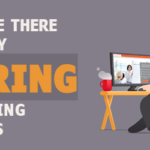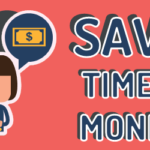Just to point out- you missed out tip number 6 🙂
10 Tips to Help You Get Started
August 9th, 2011
I get lots of questions from those who are just getting started with rapid elearning. They want to know what they can do to build good elearning. In today’s post I’d like to offer a few tips to those of you who have the same question with links to some books and previous posts.
1. You are where you are.
When I first pick up a video camera, I don’t expect to create Hollywood movies. The same goes for elearning. Accept where you are in your current skills. You won’t necessarily build world-class elearning the first time you build an elearning course. But you can build a decent and viable course. And if you want to get better, you can. It’s just a matter of learning, which entails practicing your craft.
Good books to get started:
The links to Amazon books may produce a slight commission.
2. Learn to use the tools.
It never fails that when I show people a few tricks in PowerPoint that they’ll say they never knew that was possible. If you don’t know what the tools can do, odds are that you’ll minimize what you can do with your courses.
The more you know about the tools you have the better you’ll be at building courses. Understanding the features and what they allow will open the door to all sorts of creative ideas and interactivity.
Learn more: If you’re an Articulate user, there are two good books and the user community with hundreds of tutorials and thousands of active members.
- Essential Articulate Studio ‘09
- E-Learning Uncovered: Articulate Studio ’09
- E-Learning Heroes Community: tutorials, PowerPoint templates, and free downloads
3. Click & read isn’t bad.
I hear so many complaints about boring click-and-read elearning. But the only ones I hearing complaining are those in the elearning industry. I don’t hear it from the learners. In fact, I routinely ask people I meet what types of elearning they take at work and what they think.
What they complain about isn’t that the course is linear or click-and-read. Instead, they complain about content that is irrelevant to what they do. So they’re not bored with the course structure; they’re bored with information that they don’t need.
4. Treat elearning like a textbook
Learning is a complex process. The elearning course isn’t the end-all to the person’s learning experience. It’s just part of it. Often we treat the course as if it’s the only way a person’s going to learn.
Think of your elearning course more like a text book. Some texts require that you read and reflect. And some are like workbooks. You get some information, apply it, and then see how you did.
In either case, elearning is just part of the process. You’ll have more success if you focus attention on performance support prior to and after the course is completed.
5. Make it meaningful.
Like I stated earlier, people complain about courses that are meaningless. The first step towards success is to create courses that are meaningful to the learners. Many times the courses we build are information dumps. Instead of an information dump, create situations where the learners have to use the information to make decisions relevant to what they’d do in the real world.
7. Get rid of stuff.
One of the best things you can do is take information out of the course content. Often we put too much information in the course, more than the learner needs. Focus on just the information you need to meet your goals. All of the other information can be pulled out and placed in addendums, reference links, or in downloadable job aids.
8. Focus on objectives.
Determine your learning objectives. Figure out what you need to do to meet them. Then figure out how you’ll assess that the objectives are met. Simple as that. Ideally your objectives are focused on action. What will they be able to do when they complete the course?
9. Develop a simple style guide.
I’m not in favor of style guide fascism where all course have to look the same. However, when you build a course, you should develop a style guide to go with the course. This will help you build a consistent design where you are intentional in colors, alignment, fonts, and overall look and feel.
Templates are great for this. They help with the general course structure and get you pointed in the right direction. You can create templates to guide the look and feel as well as templates that help guide the interactive components.
As you build skills, you’ll rely less on the templates. You’re better off with a basic course that is well designed than one that has every bell and whistle but doesn’t work well for the learner. Plus if you’re just getting started, a more elaborate course will take more time to build.
10. Apply sound graphic design.
People are drawn to things that look good. So you can start engaging them by creating a course that has the right aesthetic appeal. Will a nice looking course be enough? No. But it’s a start.
Graphic design is also about directing the flow of information and how the eye scans the screen. This contributes to the successful transmission of the content. In addition, it’s important to have the right contextual design. Ideally you’re able to craft a visual context that matches the course content.
- Why Looks Matter in E-Learning Courses (And What You Can Do About It)
- How Good Graphic Design Helps Build Meaningful E-Learning
- Make Sure Your E-Learning Course Looks the Way It’s Supposed To
These tips and resources should help point you in the right direction. Build your first course and then do a post assessment when you’re done. Reflect on what went well and where you could make improvements. Then the next time you build a course, work on those areas. And in no time at all you’ll be a rapid elearning pro.
Events
- Everyday. Check out the weekly training webinars to learn more about Rise, Storyline, and instructional design.
Free E-Learning Resources
 |
 |
 |
|
Want to learn more? Check out these articles and free resources in the community. |
Here’s a great job board for e-learning, instructional design, and training jobs |
Participate in the weekly e-learning challenges to sharpen your skills |
 |
 |
 |
|
Get your free PowerPoint templates and free graphics & stock images. |
Lots of cool e-learning examples to check out and find inspiration. |
Getting Started? This e-learning 101 series and the free e-books will help. |
30 responses to “10 Tips to Help You Get Started”
Nice list, Tom. With #10 — attractive graphics, #3 is all the more true: Click & read isn’t bad.
Perfect timing with this article. THANK YOU!
FYI – found a typo in the tidbits section: “sing up list” should probably be “sign up list.” Of course, if it is a musical event, I apologize for misinterpreting your intent.
Nice article-we all could use reminders of some of the basics every now and then. Love your tips, Tom!
[…] More here: 10 Tips to Help You Get Started » The Rapid eLearning Blog […]
Definitely some good considerations in this article. By running my own e-learning company http://www.Scholarix.ca I can say one of the most important things to keep in mind is to not get into a template or cookie cutter one style fits all mind state. Always need to keep the audience AND objectives in mind when designing.
I like tip #7 – To Get Rid of Stuff…my challenge with any eLearning project (or Instructor Led) is to edit down and make those “tough” decisions on what info to eliminate. I also like your other point that any eLearning course is only a part of the learning process, and not the only “one-and-done” in the learning process. Thanks again.
[…] This post was Twitted by aejaye […]
[…] Traduzione autorizzata tratta dal post originale di Tom Kuhlmann sul “Rapid E-Learning Blog”. Il post originale è disponibile qui […]
Leggi la traduzione (autorizzata) in italiano di questo post qui:
In regards to #3 Click & read isn’t bad.
– Unfortunately, I’ve heard from learners that in two Forture 500s I’ve worked in on many occasions they hate eReading (click-n-read). It also affected the way management viewed online training. They used sucky eLearning as a crutch to push for more classroom training, instead of eLearning.
As a beginner’s starting point, click-n-read isn’t a bad option. But make sure you don’t stop there. Refine your skills to include more engaging and relevant interactions.
Just my experience and $0.02
I think one of your most important tips is #8: Focus on Objectives. Powerful words: “figure out how you’ll assess that the objectives are met”. If we did this consistently, more elearning would attain its goals. I still see ID’s posting course outlines where they show you how to organize row after row of content, but can’t even justify why it is there in the first place. Designing with the assessment in mind: it’s good practice!
I’d say “reading isn’t bad”. I think one of the classic mistakes is “Click for a spoonful of reading and nothing else”. As a learner, if you want me to read then give it to me in a format that is natural for reading.
In your Third Tip, you have managed to confuse cause and effect – click-and-read, boring and work-related content. E-Learners struggle when e-learning content is not relevant to their work environment or educational goals, (as would any learner). Learners also struggle because e-learning, stuck in its 1.0 version, is incredibly boring, black and white, limited in its potential focusing on “click-and-read”. These are two different things. One is what students learn about, the other is the way in which students learn. We need to get into E-Learning 2.0 where we make learning on-line challenging, anticipatory, where students are leaning forward to find the next wow moment of discovery, instead of spoon-feeding, yes, quite frankly boring black and white text, when learners have grown up in a verbal/visual medium environment, where new information is posted all the time, where there is no text-book because it hasn’t been written and when it is it will be out of date before hitting the shelves. We need to move out and on, not say that we can be boring as long as we have content relevant to our learner’s work environment.
[…] 10 Tips to Help you Get Started with Rapid E-Learning […]
I think the point 8 is the most important, where you mention the stay focused on our work and the distractions of every day are often not possible to concentrate on our real goal. Thank you and congratulations
Nice information. Great tips-all of them and the added links for additional information. Thanks for sharing this!
Tom, I appreciate these tips very much however, for me, they come a day late and I’m a dollar short.
A few years ago, a teacher approached me to setup an eLearning classroom for him. I had no clue what he was talking about, shoot, I was a web designer! I passed him on and forgot about it until I read these Ten Tips. Tip #1, “You are where you are” with the book suggestions really opened my eyes. Luckily, it has opened my eyes to other areas of learning, and for that I’m truly grateful.
Thanks.
Tom – I’ve learned so much from your tutorials, they are excellent. Have you ever done one on how you designed the header (man drinking coffee)for your blog?
I think that your tips are very helpful especially to someone like me who has little experience with e-learning but practice makes perfect and we all have to at least have a starting point. I love tip #2, learn to use the tools, because there are so many different and interesting things that can be done with different tools such as powerpoint that we are unaware of as you mentioned. There has been several times when I found out new things about different tools and as a result was able to make better presentations. I also like tip #5, make it meaningful because meaningless courses are just a waste of time in my opinion. If I am willing to give my time and effort to a class, I at least would like it to be meaningful.
[…] In either case, elearning is just part of the process. 10 Tips to Help You Get Started » The Rapid eLearning Blog | Technology for classrooms | Scoop.it […]
[…] I get lots of questions from those who are just getting started with rapid elearning. 10 Tips to Help You Get Started » The Rapid eLearning Blog […]
[…] 10 Tips to Help You Get Started » The Rapid eLearning Blog However, when you build a course, you should develop a style guide to go with the course. This will help you build a consistent design where you are intentional in colors, alignment, fonts, and overall look and feel. Templates are great for this. They help with the general course structure and get you pointed in the right direction. […]
[…] 10 Tips to Help You Get Started » The Rapid eLearning Blog | Technology for classrooms | Scoop.it In either case, elearning is just part of the process. You’ll have more success if you focus attention on performance support prior to and after the course is completed. […]
Tip#6!?









0
comments